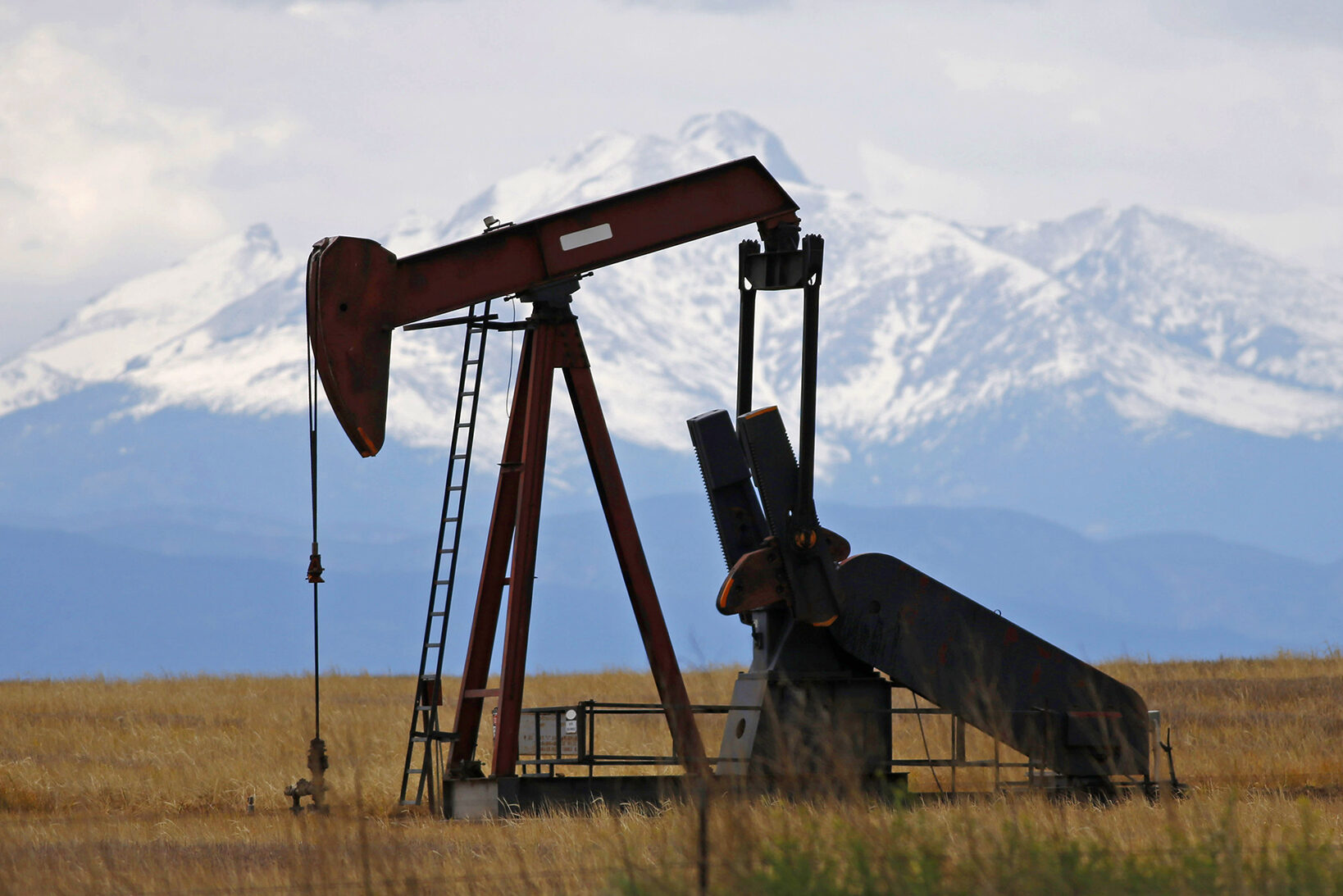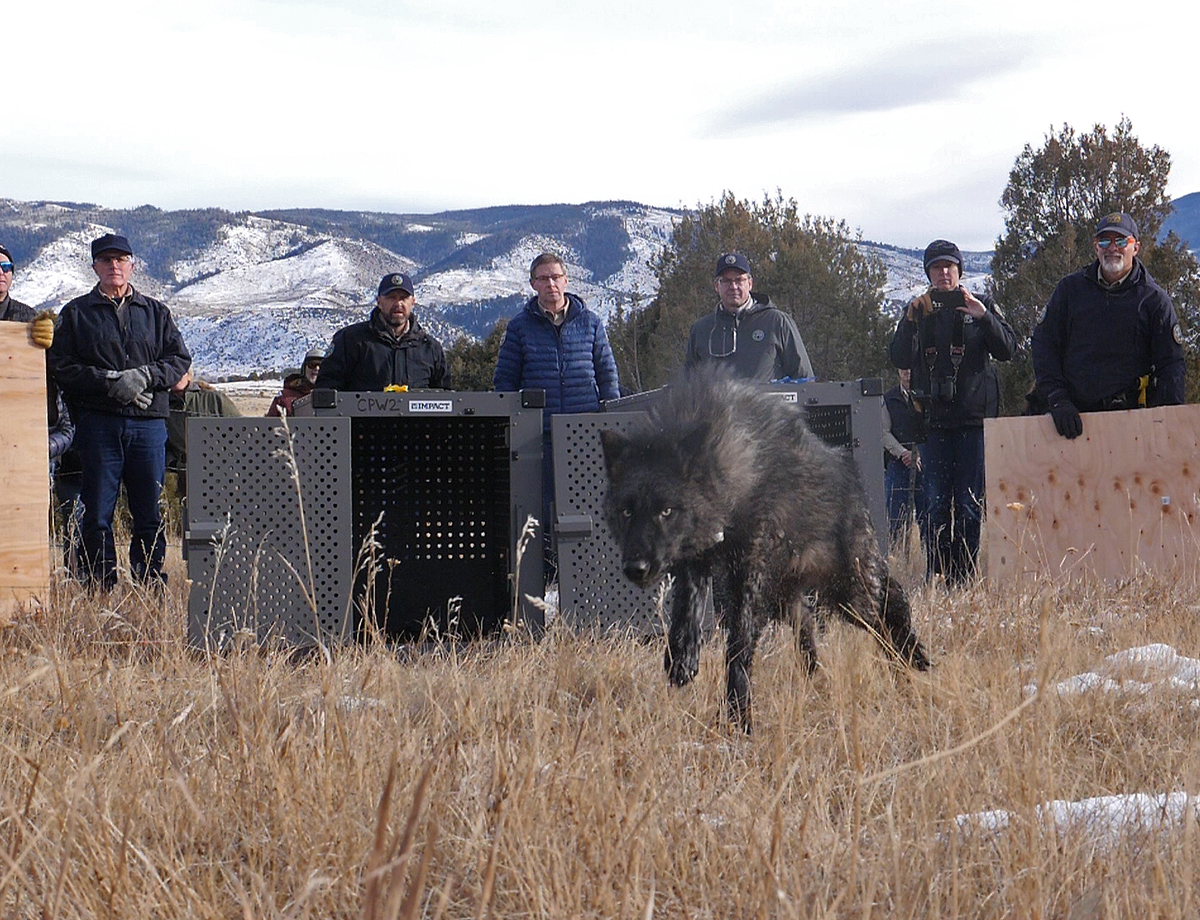
Companies have used potentially toxic "forever chemicals" to coax oil and gas from Colorado wells since at least 2008, according to a new report from Physicians for Social Responsibility.
The environmental advocacy group also claims drillers may have concealed some dangerous chemicals they’ve pumped into wells under state rules that allow companies to withhold the disclosure of industry "trade secrets." Dusty Horwitt, one of the report’s authors, said the disclosure exemptions make it nearly impossible to know the full extent of the industry’s use per-and polyfluoroalkyl substances — also known as PFAS.
"Coloradans could be unknowingly exposed to these highly toxic forever chemicals, as they're called, from thousands of oil and gas wells across the state," Horwitt said.
The claims could add another chapter to a rapidly expanding PFAS pollution crisis. The category of chemicals was born in 1938 when a chemist at DuPont stumbled upon polytetrafluoroethylene, a compound that later became famous as a nonstick cookware coating known as Teflon. Companies soon found other applications for the chemical’s slipperiness and ability to resist oil and water. The discovery fueled the development of other PFAS chemicals now used in a wide range of consumer products like dental floss, waterproof jackets and fire fighting foam.
Over the last few decades, researchers have increasingly raised concerns about potential health threats. Peer-reviewed studies have found PFAS exposure can lead to an increased risk of fertility problems, high cholesterol, certain cancers and other health issues, according to the U.S. Environmental Protection Agency.
While scientists haven't fully understood how PFAS endangers human health, it's clear the persistent chemicals have become an unavoidable part of modern life. Public health experts estimate 95 percent of Americans have traces of PFAS in their blood. A 2020 state sampling project found detectable levels of the chemicals in every river and stream sampled across Colorado.
Teflon is an ingredient in fracking fluid
The Physicians For Social Responsibility report analyzes a database called FracFocus.org, where Colorado regulators submit reports on the chemicals oil and gas operators mix into fracking fluid. The authors found oil and gas companies used PTFE in 282 wells between 2012 and 2019, the year when companies submitted the latest disclosures of the chemicals in fracking fluid. Most of those sites are clustered in Weld and Garfield Counties.
PTFE is considered a stable compound that presents little risk under normal conditions. The report doesn’t identify why it's being used, but drillers add many different chemicals to lubricate the fracking process and prevent clogs. Horwitt said the group is concerned PTFE additives could break down into more dangerous PFAS chemicals amid the intense heat and pressure inside an oil and gas well.
Lynn Granger, the executive director of the Colorado chapter of the American Petroleum Institute, said the organization hasn't analyzed the FracFocus.org database itself but noted that the environmental group's report is not a technical assessment designed to measure potential harm to public health.
“It does not provide any information on the duration, frequency and magnitude of any exposures that could have occurred during the limited times that an operator could have potentially used the chemical of concern, information that is key in determining health risks,” Granger said.
State environmental regulators say there’s no evidence that PFAS from fracking fluid has contaminated drinking water. A 2020 study of 400 water systems across the state found no PFAS levels above those considered dangerous by the EPA, said Erin Garcia, a spokesperson for the Colorado Water Quality Control Division. The state study included water testing in Weld County, where many companies reported using PTFE in fracking fluid. The water sample with the highest level in Weld County recorded 13 parts per trillion — well below the EPA's health advisory limit of 70 parts per trillion, the state study found.
Dan Haley, president and CEO of the Colorado Oil and Gas Association, said the water testing data provided further proof there’s no public health threat from fracking.
“Given that, and the fact hydraulic fracturing is done more than one mile below the surface — and under some of the most rigorous environmental standards in the world — we’re confident that the process is being done safely in our state,” he wrote in an email.
The Physicians For Social Responsibility report also raised concerns that state rules allowing oil and gas companies to conceal the types of chemicals used for fracking could cloak the industry’s use of other potentially harmful chemicals, including fluorosurfactants, which can also break down into toxic PFAS.
Trade secrets could conceal other potentially toxic chemicals
Drillers use surfactants to help push oil and gas to wells. A 2008 paper in the Open Petroleum Engineering Journal detailed how adding the chemical tripled natural gas production during a test on a well in Moffat County. The authors, including an employee of chemical company DuPont, noted surfactant additives have been used in oil and gas exploration for "four decades.”
Colorado allows companies to conceal the identity of some fracking chemicals under regulations designed to protect industry trade secrets, an exception that’s been included in regulations since the state became one of the first to require chemical disclosure in 2011.
No companies operating in Colorado have disclosed using potentially dangerous fluorosurfactants in the FracFocus.org database. But Horwitt with Physicians for Social Responsibility worries the trade secret exemption could allow companies to use potentially dangerous fluorosurfactants and label them as “surfactants,” a broad category that includes compounds without PFAS.
According to the group's analysis, companies used unnamed surfactant chemicals in more than 3,200 wells across Colorado. The report suggests oil and gas firms have withheld information on chemicals pumped into about 12,000 Colorado wells in total.
"Coloradans should not have to guess what kind of chemicals are going into oil and gas wells considering the risks of exposure, but because of many gaps in Colorado's oil and gas regulations the public is left uninformed in many cases," Horwitt said.
Megan Castle, a spokesperson for the Colorado Oil and Gas Conservation Commission, confirmed current rules allow companies to apply for exemptions to conceal specific fracking fluid ingredients as trade secrets and list them under a general description. In the event of a spill or other accident, companies must supply regulators with the identities and concentrations of all chemicals, according to state regulations.
Under current rules, trade secret exemptions are approved by the commission’s director. Castle said the commission has never denied a company’s application to keep chemical identities secret.
Granger, the executive director of the Colorado chapter of the American Petroleum Institute, said trade secret protections incentivize companies to develop new products, including ones that use more benign chemicals and conserve water. She said transparency is important and necessary but said oil and gas companies have only concealed a small number of the chemicals used in Colorado wells.
Physicians for Social Responsibility said the findings bolster its recommendation that Colorado policymakers take steps to ban fracking and require greater transparency from the oil and gas industry.
Horowitt said Colorado should adopt rules similar to those used in California, which requires companies to disclose the ingredients of different commercial products pumped into wells, but not the names of the products themselves. The report’s authors say the California rules allow the public to know what goes into fracking fluids without forcing chemical companies to disclose proprietary formulas.
Editors note: This story was updated to include additional details about the time frame for Physicians For Social Responsibility's analysis.








